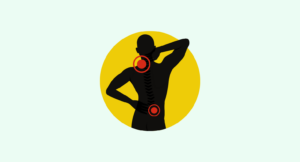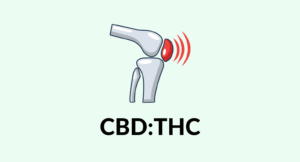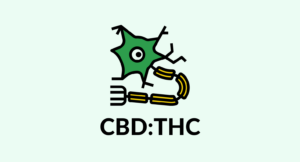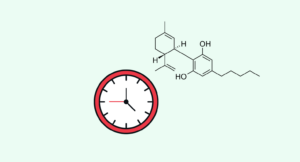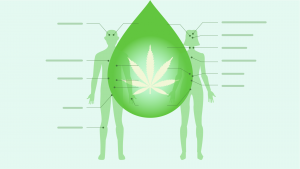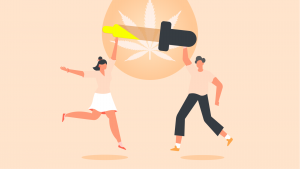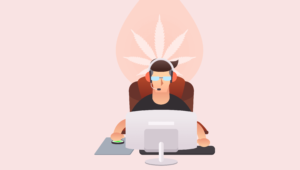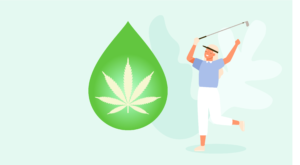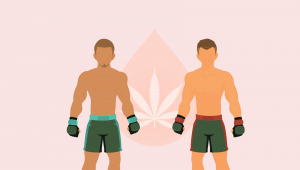
Evidence based
CBD and Yoga: Rediscover the Benefits of This Ancient Duo
CBD is one of this year’s hottest trends. And it could transform your yoga routine — for reasons you’ll soon understand.
CBD and yoga — it’s a surprisingly age-old combination that’s just now making a comeback.
The first time around, news of the practice spread by word of mouth through ascetics and yogis, and their sacred texts like The Vedas and the Yoga Sutra.
This time, however, CBD-fueled yoga has the full backing of social media, google trends, and a veritable army of health enthusiasts. It seems they might be onto something.
Though the practice of yoga is nearly as old as society itself, the biological basis of the practice has remained pretty much unchanged. Yoga still promotes inner awareness, just as it did back then. But with modern scientific advancements, we’ve since discovered other tangible benefits yoga has to offer the body.
One such area of benefit overlaps with the effects of CBD and the system it works through — called the endocannabinoid system (ECS).
When you stop to think about it, there’s a lot of overlap between the effects of CBD and yoga — which makes the two a perfect pair.
Below are just a few more of the ways that CBD could benefit yogis of all levels:
- Better adaptation
- Improved mind-body connection
- Increased focus
- Reduced inflammation
- Enhanced inner awareness
- Faster muscle recovery
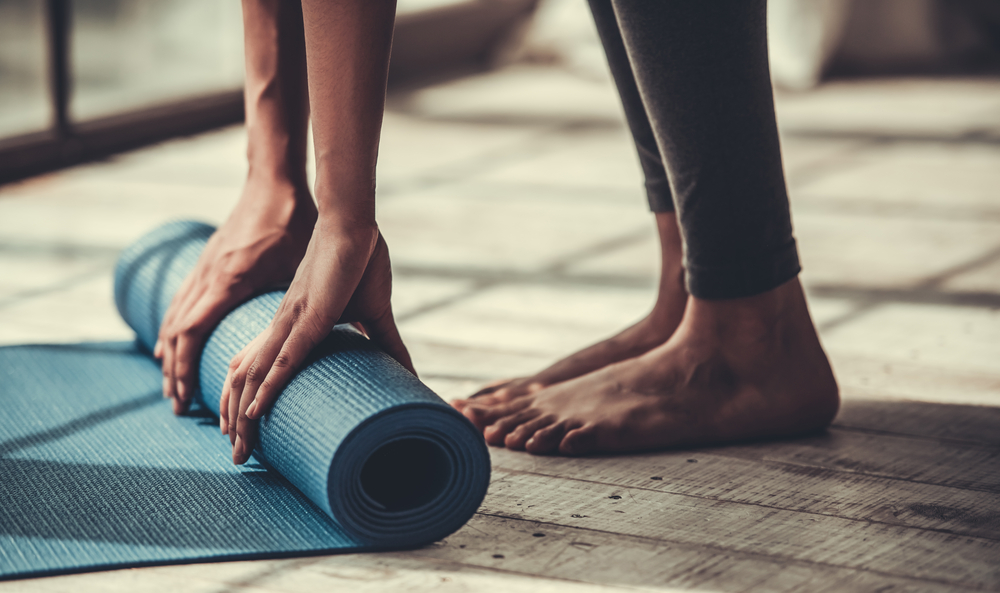
Yoga Adaptation Using CBD
While the practice of yoga teaches us to say no! to external distractions and demands — yogic exercises themselves can be physically demanding. They put a strain on tendons and ligaments, especially if done incorrectly.
Even the gentlest transition into yoga requires the body to respond with increased flexibility, fluidity, and suppleness. Yoga also requires good balance, which in turn demands strong proprioception (awareness of body positioning).
Then there’s the stretching inherent to yoga, of course… which can be intense as well. It seems mentally transcending one’s environment may require a dose of physical transcendence too!
Yet stretching has actually been shown to activate endocannabinoid receptors in the muscles and fascia. More receptor activation may allow for more cannabinoid engagement [1].
We’ve covered the benefits of CBD for muscle recovery in another article, here’s a summary of the benefits:
- Relaxes the muscle tissue
- May relieve muscle pain
- Curbs inflammation in the muscle tissue
- Enhances satellite cell differentiation (leading to faster recovery)
- Supports protein synthesis through cortisol reduction

Improve The Mind-Body Connection
CBD may allow you to better adapt to yoga by improving the mind-body connection, too.
After all, CBD strengthens what researchers call “a literal bridge between body and mind”.
Although the idea that CBD can better bridge the gap between consciousness and movement may seem more mystical than scientific — there’s some truth to the statement.
One study conducted by the Intercontinental Neuroscience Research Group theorized that the endocannabinoid system (ECS) has a role in human consciousness itself. This is evidenced by the involvement of the ECS in abstract cognitive processes like post-traumatic stress, mood, and dream states [4].
Such is the depth of endocannabinoid function — even the world’s leading researchers sometimes describe it with broad concepts like consciousness and emotional fluidity.
Part of the mind-body connection goes back to one of the central tenets of yoga — clearing the mind. A study from way back in 1979 agrees: “Hatha yoga calms the mind to the point that the individual is aware only of the ‘here and now’ […which] includes an awareness of subtle bodily conditions.” [5]
CBD may play an equally important role in this area. Many users report feeling more focused and intuitive when they take the plant compound.
Perhaps best of all, it doesn’t usually take much CBD to see enhancements in focus and mood. Dr. Dustin Sulak and many other cannabinoid experts have reported that their patients improve on just a few milligrams of cannabinoids per day!
That equates to about half a dropper’s worth of your average CBD oil.
From a homeopathic perspective, it’s thought that “microdosing” herbal compounds stimulate much larger changes in our physiology. That definitely seems to be the case with the nootropic-like CBD.
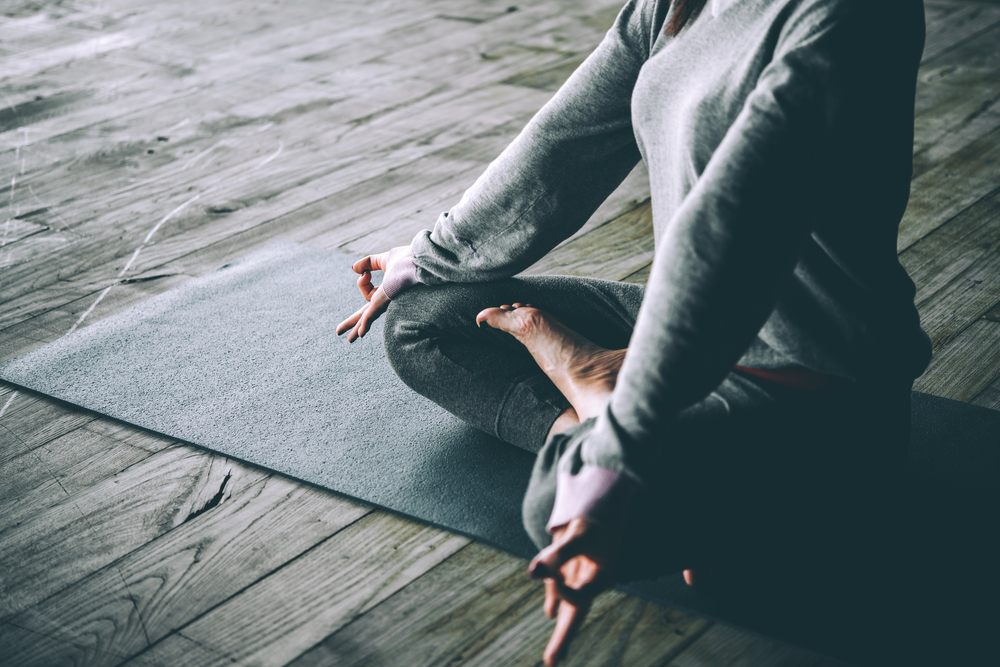
Enhance Focus & Concentration
Of course, yoga isn’t just about becoming more in tune with your body. That’s only half the equation because enhancing your inner awareness depends on the silencing of external distractions and falsehoods.
In a very real sense, yoga requires its practitioners to fully reclaim their minds. Today’s phone bill, tomorrow’s work deadline? Forget them, become free from them — if only for the next 10 minutes.
But this type of forgetfulness is harder than ever. It seems as though all of us have fallen into the gravitational pull of Social Media, a planet on which narcissism and hyperstimulation are the norms. A pull that was once confined to one or two hours a day (just think about the once-daily daily news) now has us in its grasp at all times.
Indeed, the average American checks their phone nearly a hundred times a day; if forced to go without the device they often experience anxiety, unrest, and other “drug-seeking” behavior.
It’s not crazy to think about this as a real addiction, “withdrawal” from which may negatively impact all sorts of other things. That includes our ability to focus at work, nourish real relationships… and clear the mind during yoga.
Here’s another seemingly cryptic concept — could CBD help our culture better live in the now? Maybe shift our brain chemistry, even, so we can focus more on the present moment?
Initial research has shown this cannabidiol is intimately involved with the function of key neurotransmitters like serotonin [11] and dopamine [12] — both of which play a key role in our ability to remain focused. This could explain why some users report CBD can improve learning and concentration.
Cannabis experts are also backing this idea up. Molecular biologist Dr. Bob Melamede says cannabinoids expand the periodicity of each moment — that’s the amount of perceptual ‘snapshots’ our brains can process in any given unit of time.
More frequent snapshots mean each moment lasts longer, from a relative perspective. If a person can take in more of their life, might each of its moments be more greatly enjoyed?
Once again, cryptic… but theorized by one of the brightest minds in the endocannabinoid-research world. If you’re ready to slow down, fully experience life, and enjoy each and every moment, consider yoga! If you find combating daily distraction challenging and would like a little help with your yogic practice, consider CBD!

Reduce Inflammation with CBD
Inflammation… we all know how bad it is, how we’re all chronically inflamed, and how that’s not good for our general health or our pain levels, etc. It’s an epidemic!
Actually, it’s not that simple.
A little bit of inflammation is a good thing. Especially when it’s used to signal to the immune system that a little extra assistance is needed. Inflammation initiates a cascade of hormonal responses that, when everything works properly, allows inflamed areas to properly recover and heal.
Inflammation, like anything else the body does naturally, can be a beautiful thing.
Yet our culture’s inflammatory epidemic is anything but natural. Inflammation is meant to help us rebound after occasional injuries — not act as a buffer against the health risks of processed foods.
Worse yet, many people combat this unnatural state with unnaturally strong solutions like NSAIDS or even opioids. Not good!
That’s true from an evolutionary perspective, at least. The mismatch between our body’s natural state and its unnatural environment requires a holistic solution. Thankfully, practicing yoga has been shown to lower levels of chronic inflammation [13], especially if done regularly.
As Harvard’s health blog reports: “an exploratory study published in Oxidative Medicine and Cellular Longevity [found] that 12 weeks of yoga slowed cellular aging”. Faster cellular aging is believed to be a consequence of chronic inflammation — as reported but the National Institute of Ageing.
Another insightful study titled Yoga, Meditation and Mind-Body Health found yoga correlated with improved brain function (it increased something called brain-derived neurotrophic factor) and better morning mood [6]. Subjects also seemed to deal with the daily stressors of their lives better, as revealed by lower levels of stress hormones like cortisol.
Finally, yoga also reduced the subject’s inflammatory markers, like their cytokine levels, that are known to lead to pain. No wonder Yogis can truthfully claim the following:
“Yoga is the process of eliminating pain – pain from the body, mind and the society.”
— Amit Ray, Yoga The Science of Well-Being
But if you’re experiencing a level of inflammation or pain that dissuades you from practicing yoga in the first place, your body might need a little extra help. That’s where CBD comes in.
CBD is a broad-spectrum anti-inflammatory. It’s been shown again and again and again to reduce inflammation in areas where relief is needed most:
- In the brain
- In painful areas
- In joints and tendons
- In tired and sore muscles
Yet CBD doesn’t eliminate inflammation entirely. Like we said, inflammatory responses are helpful — for muscle recovery, injury prevention, even for yoga itself.
In the short term, inflammation speeds healing by removing metabolic waste and bringing fresh, nutrient-rich blood flow to the area. It’s only when the inflammatory process continues for extended periods of time that it starts to have a negative impact on local tissue.
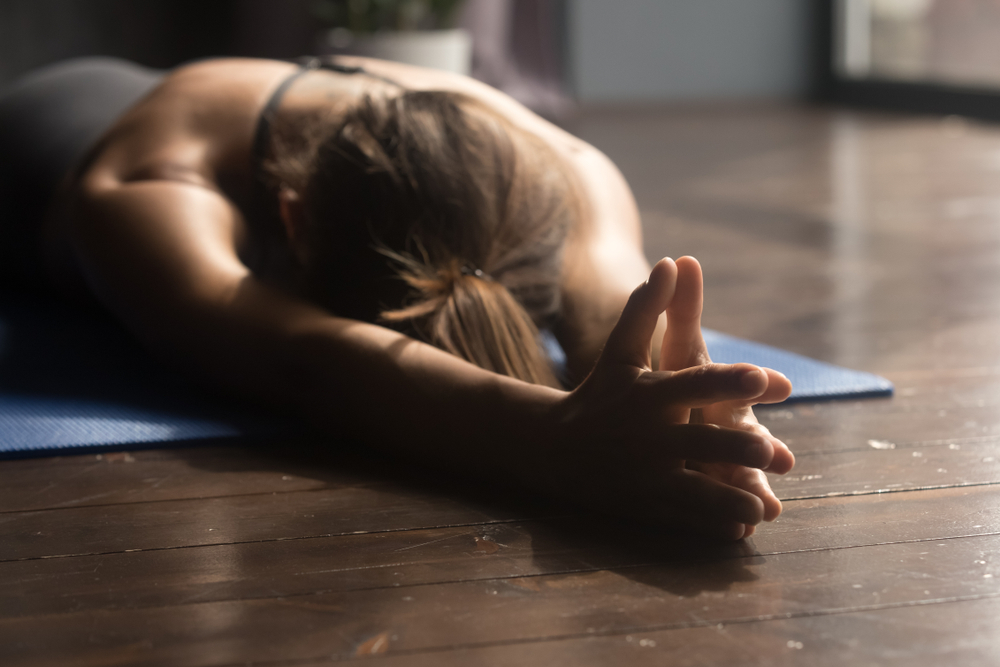
Enhance Body Perception
Many people love yoga for its ability to support the perception of the body.
But we’ve already touched on that, so let’s now turn our attention to CBD and how it could enhance self-awareness further. You’ll find some theoretical stuff in this section, which we feel is warranted.
You might already know that exercise boosts our body’s levels of endocannabinoids like anandamide — which is thought to contribute to sensations like the “runner’s high” [14] and plays a key role in the mood-regulating benefits of the endocannabinoid system [15].
CBD has been shown to increase anandamide levels by inhibiting the enzyme designed to break it down — known commonly as FAAH [16].
The effects of CBD on mood go much deeper as well. This phytocannabinoid is also considered an endovanilloid, modulating the vanilloid receptors throughout the body [8,9].
The role of this system is pretty abstract, but what does this mean in terms of perception in the body?
The vanilloid receptors sense pain, regulate body temperature [17] — two critical elements of the human experience. Our body uses pain to assess the risk to the body — it tells us when we’re at risk of damaging our joints or muscles from overstretching or positioning ourselves poorly during our yoga practice. Temperature is also important, as it plays a role in our metabolic rate and critical aspects of homeostasis (internal balance).
In theory, applying said topical to potential ‘problem areas’ prior to your next yoga session could be helpful for improving your body’s perception to internal changes in the muscle tissue. Oral CBD may provide similar benefits as well.
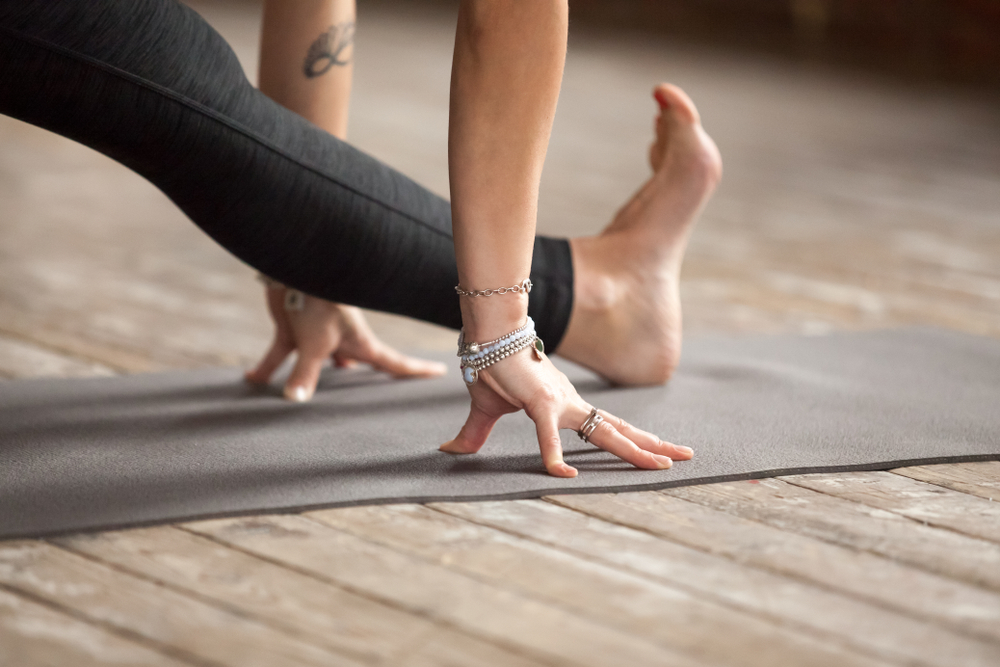
Final Thoughts
Improving health is often the ideal goal of a daily yoga practice. Whether you’re a yoga beginner or a true master of the ancient art, taking CBD may help you take your practice to another level.
CBD isn’t a cure-all, and there are a lot of other factors you need to employ to really get the most out of your yoga practice as well — but it could be a useful tool for helping you get just a little more out of a dialed-in practice.
The effects of CBD are many, but the most relevant when it comes to yoga include enhancing the mind-body connection through the ECS, improved yoga adaptation through local activation of the ECS in muscle tissue, reduced inflammation, and enhanced focus and concentration during your practice.
Have you incorporated CBD with your yoga practice? Share your experiences in the comments below.
References
- McPartland, J. M. (2008). Expression of the endocannabinoid system in fibroblasts and myofascial tissues. Journal of bodywork and movement therapies, 12(2), 169-182.
- Marcella, P. et al. (2018). Endocannabinoid‐related compounds in gastrointestinal diseases. Journal of cellular and molecular medicine, 22(2): 706–715.
- Alger, B. E. (2018). Getting High on Endocannabinoid System. Cerebrum. 2013: 14.
- Murillo-Rodriguez, E. et al. (2017). The Endocannabinoid System Modulating Levels of Consciousness, Emotions and Likely Dream Contents. CNS & neurological disorders drug targets,16(4):370-379
- Walsh-Martin, D. E. (1979). The effects of Hatha yoga on self awareness.Theses Digitization Project. 117.
- Cahn, B. R., Goodman, M. S., Peterson, C. T., Maturi, R., & Mills, P. J. (2017). Yoga, Meditation and Mind-Body Health: Increased BDNF, Cortisol Awakening Response, and Altered Inflammatory Marker Expression after a 3-Month Yoga and Meditation Retreat. Frontiers in human neuroscience, 11, 315.
- Elliott D.M., Singh N., Nagarkatti M., Nagarkatti P.S. (2018) Cannabidiol Attenuates Experimental Autoimmune Encephalomyelitis Model of Multiple Sclerosis Through Induction of Myeloid-Derived Suppressor Cells. Front. Immunol. 9:1782.
- Starowicz K, Nigam S, Di Marzo V. (2007) Biochemistry and pharmacology of endovanilloids. Pharmacol Therapy, 114(1):13-33.
- Costa, B., Giagnoni, G., Franke, C., Trovato, A. E., & Colleoni, M. (2004). Vanilloid TRPV1 receptor mediates the antihyperalgesic effect of the nonpsychoactive cannabinoid, cannabidiol, in a rat model of acute inflammation. British journal of pharmacology, 143(2), 247–250.
- Caterina, M. J., & Pang, Z. (2016). TRP Channels in Skin Biology and Pathophysiology. Pharmaceuticals (Basel, Switzerland), 9(4), 77.


